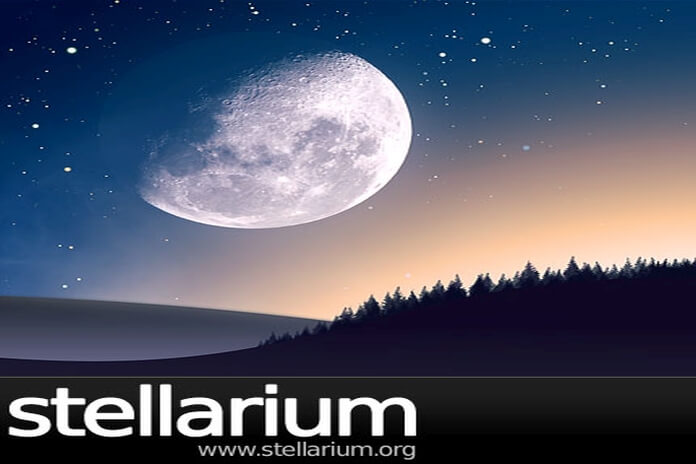

It should initially display the current and correct date and time. Set your time: Click on the Date/Time Window icon (vertical toolbar, second icon).Notice on the map that your red location arrow is correctly pointing to central Arkansas, and you can close the location window. In the search box, start typing "Conway." By the time you are three letters in, you should see your location list has been whittled down to just a few places, and you can select Conway, AR. There are many ways to specify where you are, but start by doing the fastest thing. Set your location: Click on the Location Window icon (vertical toolbar, top icon).You can spend a few minutes clicking around, just to see what this button or that toggle does. This has toggles for the most common viewing options, as well as time controls. There is a horizontal toolbar along the bottom left edge as well. At the left edge of the window, towards the bottom, you will find a vertical toolbar with configuration windows for setting location, date, and viewing options. You have two toolbars that you activate by moving the mouse over their locations. When the program has loaded, your screen should show you located in a field of grass, facing south. Examine the position of the sun in the sky over the course of a year.Define and distinguish between systems of astronomical coordinates.Become familiar with the Stellarium program and its user interface.We can change our location, and see the sky from parts of the world we have never visited.or from other worlds entirely. We can watch the stars and planets move quickly across the night sky in a way that would not be possible outdoors, or even with a professional telescope. We can examine the sky on any day, at any time: past, present, or future. First, and most obviously, it's never too cloudy to observe the sky on the screen! Another powerful advantage is time. The advantages of using a computer-generated sky are numerous. This program is installed in the computer lab LSC 174, so you are free to use it any time the lab is open. If you have your own copy installed, you can work on lab exercises at your own convenience, review or double-check your lab answers before quizzes, or just play around with it. If you have your own computer, you should consider installing it. Stellarium is a free, open-source planetarium program available for download. Chapter 13: Neutron Stars and Black Holes.


 0 kommentar(er)
0 kommentar(er)
